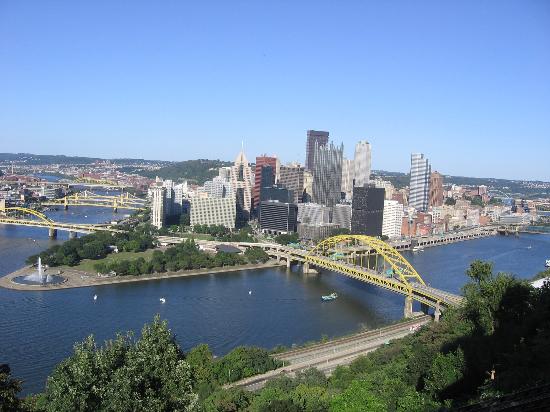
As the G20 summit convenes in Pittsburgh this week the story nationally – and internationally – is the stunning reversal of fortune for a city that essentially imploded in the early 1980s. When the steel industry collapsed in Pittsburgh in 1982 the city’s population was cut in half and Pittsburghers scoured the nation for work. The horrendous air and water pollution made Pittsburgh a truly unattractive place for new businesses. It seemed that Pittsburgh would go the way of Detroit – or even Gary.
But it didn’t. Spurred by the education and health care industries Pittsburgh has rebounded as one of the most economically healthy cities in America. Its rebirth has given hope to other Rust Belt cities desperate for a makeover.
But one thing often forgotten in the great history of Pittsburgh is its relationship to the surrounding countryside. And I don’t just mean western Pennsylvania. Like other major industrial cities like Chicago, Pittsburgh’s rapid industrialization in the late 19th century fundamentally transformed the landscape of both the city and the large hinterlands that provided resources to it. And in the case of Pittsburgh that hinterland is Appalachia. Yes, Pittsburgh really is and has always been the capital of Appalachia. Not Knoxville. Not Roanoke. Pittsburgh.
In fact, Pittsburgh’s burgeoning steel and aluminum industries lay at the heart of another city on the far southern end of the Appalachian chain – Birmingham. In 1870 Birmingham, Alabama did not exist as a town. 20 years later it was “the Magic City” with blossoming steel mills converting the pig iron found in the neighboring hills of Red Mountain. Birmingham was quickly dubbed the “Pittsburgh of the South” because of its reliance on the steel trade. Investors from Pittsburgh helped launch the industrial economy there, tying the two cities together for a long time.
But elsewhere in Appalachia Pittsburgh also made its impact. Pittsburgh-based Alcoa – or Aluminum Company of America – created a new aluminum plant in Blount County, Tennessee, just south of Knoxville. To power the new mill Alcoa constructed dams on the Little Tennessee River; these dams would be among the first in what would eventually be part of the Tennessee Valley Authority. Alcoa even spawned a company town called “Alcoa” that still exists as a thriving suburb of Knoxville. In neighboring Maryville Pittsburgh investors helped restore Maryville College after the Civil War caused so much devastation to the institution. Near the Smoky Mountains a Pennsylvania investor named Colonel William Townsend established the Little River Lumber Company, which harvested over 2 billion board feet of lumber. The company finally and mercifully sold off the denuded land to the Federal government for the establishment of Great Smoky Mountains National Park.
And then there are the coal mines in eastern Kentucky and southern West Virginia. Many of these coal companies are based in Pittsburgh and once delivered coal to steel plants in and around Pittsburgh. Railroads led directly northeast from the Cumberland Mountains to Pittsburgh’s vast steelyards, funneling Appalachia’s oldest and richest fossil resources to the Steel City.
Pittsburghers probably don’t think of their city as an Appalachian one – even though the landscape is one of the hilliest outside San Francisco. But the city’s historic connection to the Appalachian region – and its long record of exploiting Appalachia’s natural resources – make Pittsburgh the veritable capital of Appalachia.
One can only hope that the towns and cities of Appalachia can experience the sort of renaissance that Pittsburgh did. Some have shown great promise. Chattanooga, Tennessee has emerged as a great tourist destination – especially for weekend getaways from Atlanta, Nashville, Birmingham and Knoxville. Asheville, North Carolina has become one of the prime retirement centers in America. Knoxville finally cleaned up its downtown in recent years and is now growing in population. But many other old Appalachian industrial towns struggle. Johnson City and Morristown, Tennessee, for example have yet to transform themselves. Much of southern West Virginia and eastern Kentucky is locked in a battle between mountaintop removal-supporting coal companies and communities who see a future based in green energy or tourism. And outside of Pittsburgh western Pennsylvania still hemorrhages population.
I doubt the G-20 folks will learn of the city’s ties to the Appalachian mountains. But as they consider climate change and other environmental issues they should take some time to think about how the host city once altered – and destroyed in some cases – the Appalachian landscape that so many people around the world cherish for its natural beauty. If Pittsburgh can change from its sooty past, surely Appalachia – and the world – can too.
















